
The Power of She brings female deities from around the world into the limelight, focusing as much as possible on those that are lesser known in regions around the world.
Girl and women (female) gods have been around since the beginning of spiritual belief. ‘She’ manifests in many forms with many intentions and purposes. Often ‘She’ is associated with creation, and thus is very powerful.
It may come as a surprise to many that ‘She’ is older with a longer continuity of importance than many male gods. These ancient stories help us to understand the value of females in narratives and social structures. Read on to find out more about all the varieties of She in world mythology.
Epicenters of Female Power:
Norse, Egyptian, and Greek Mythology
When we look at female deities of particular cultures, what do we learn?
What does their power tell us about the status of girls and women in the societies that worshiped them?
Join Tiffany Rhoades and Devon Allen in four episodes of our GirlSpeak podcast series to discover the answers. They take us on journeys through Norse, Egyptian, and Greek mythology to uncover the most powerful female deities and what their stories tell us about the status of girls and women.
To listen, click the play arrow on the podcast. If you would like to download the audio to your preferred podcast player, please visit our podcast site and click the “Listen in Your Favorite App” button.
Discover ‘She’
Click the ‘Read More’ button on those about which you would like to learn.
Artemis and Wild Girls
This post originally appeared as a GirlSpeak podcast episode. In Emily Brontë’s Wuthering Heights, the character of Cathy states "I wish I were a girl again, half savage and hardy, and free." This quote illustrates a nostalgia for girlhood, and the wildness and...
Mythological Girls: The Queen of Sheba
The Queen of Sheba appears in many holy texts, including the Jewish and Christian Bibles, the Islamic Qu’rān, and the Ethiopian Kebra Nagast. Despite having no ancient inscriptions dedicated to her, it may be that her myth is rooted in truth. The Sabaean Kingdom...
Mythological Girls: Nagini/Manasā
Nagini is the Sanskrit word for a female deity who takes the form of a large snake, usually a king cobra but occasionally any others in the ‘naja’ genus. Her type appears in the Indian forms of Hinduism, Buddhism, and Jainism, where she is occasionally a counterpart...
Mythological Girls: Tara
Tara is a world-renowned deity, who predominantly features as a female Buddha in many strains of Buddhism, particularly Tibetan or the "Mahayana Tradition", as it is also known. However, she is also included as one of the Mahavidyas, or the "10 Divine Mothers" in...
Mythological Girls: Cailleach
Cailleach is a creator and weather deity in Gaelic mythology, portrayed as a hag or older woman. The word "Cailleach" means hag or veiled in Scottish Gaelic. She's also known as Beira, the deity of the winter in Scottish mythology. The 20th century text Wonder Tales...
Mythological Girls: Hel
In Norse mythology, Hel, which means "hidden" in Old Norse, is a being who presides over a realm with the same name. This realm receives a portion of the dead, with the phrase "to go to Hel" meaning to die. Hel is both a giantess and a goddess, and like many others,...
Mythological Girls: Ostara
Ostara, also known as ƒíostre, is a Germanic dawn goddess who is widely believed to be the namesake of the Easter festival. She is solely attested as ƒíostre in The Reckoning of Time by Bede in the 8th century CE, where it is stated that the month of Ēostre held...
Mythological Girls: Pachamama
Pachamama is an Incan fertility goddess who is still worshipped by several indigenous tribes in the Andes. She’s also known as ‘Mother Nature’, ‘Earth Mother’ and ‘Time Mother’ and is seen with a primordial feminine image. In Incan mythology, she was a...
Mythological Girls: Julunggul, the Rainbow Serpent
Julunggul is one of the many Aborigine names for the ‘Rainbow Serpent’ in Australia, whose name and gender varies depending on the origin tribe. She is both a creator and fertility goddess, and represents the rains and oceans which are believed to be the bringers...
Mythological Girls: Bachué
Bachué is the mother goddess and master of the Muisca or Chibcha culture, an ancient Colombian civilisation. They were native to the area now known as Bogotá, and gained fame as the origin of the El Dorado legend. Bachué was believed to have emerged from the waters...
Mythological Girls: Minerva
Minerva was the Roman deity of wisdom and warfare, as well as a patron of the arts. A prophecy was told to Jupiter that his relationship with the Titaness Metis would bear a child powerful enough to overthrow him. In response, Jupiter swallowed her to neutralise the...
Mythological Girls: Guabancex
Guabancex is the supreme storm deity of the ancient Taino people. They were located across Florida and much of the Carribbean on islands such as Puerto Rico. She is also known as the ‘Lady of the Winds’ and was believed to be responsible for the onset of all...
Mythological Girls: Benten
Benten, also known as Benzaiten, is one of the ‘Shici-fuku-jin’, or ‘Seven Gods of Luck’, in Japanese mythology. She is the patron goddess of literature, music, and wealth and like many other Japanese deities, had a dual purpose in both Buddhism and Shinto...
Mythological Girls: Pattini / Kannaki
Pattini is the guardian deity of Sri Lanka in the Sinhala Buddhist religion, while also being worshipped as Kannaki by the Tamil Hindus. In Sri Lanka she is also the patron goddess of fertility and health, particularly in protection against smallpox. Kannaki is the...
Mythological Girls: Phosop
Phosop is the rice deity of the ancient Thai religion, and is one of many rice goddesses in eastern cultures. While honouring her is still practiced today, she is predominantly an ancient deity rather than a part of the structured mainstream religion. As such, her...
Mythological Girls: Malina
Malina is the sun deity of the Inuit people of Greenland, Alaska and other Arctic regions. The most common story in the circumpolar mythologies is that of her relationship with her brother, the moon deity Aningak (also known as Annigan in some locations). The story...
Mythological Girls: Jahi
Jahi is the east Iranian representation of Jeh, the Persian goddess. She is a member of Zoroastrianism, one of the oldest monotheistic religions in the world. Zoroastrianism originated in Iran approximately 3500 years ago, with Ahura Mazda as its central deity. For...
Mythological Girls: Sekhmet
Sekhmet is one of the oldest Egyptian deities. She was originally the warrior goddess associated with Upper Egypt prior to its unification in 2930 BCE. Her Lower Egyptian equivalent prior to this was Bastet. She had a variety of names including the 'Lady of Terror'...
Mythological Girls: Kitsune
The word 'Kitsune' means fox in Japanese, and refers to the use of foxes in Japanese folklore rather than the animal in general. Stories show the Kitsune to be intelligent beings, who possess magical abilities that increase with their age. One such ability is to...
Mythological Girls: Ixchel
Ixchel, or Ix Chel as she is also known, is the 16th century name for an ancient Mayan Jaguar deity. She was believed to be the goddess of the moon, midwifery, medicine and catastrophe. She is originally named as 'Goddess O' in The Dresden Codex, which is the oldest...
Mythological Girls: Kupala
Kupala was the female personification of the Slavic deity Kupalo, who was the god of peace, magic water and herbs. Alongside this, he was also one aspect of a fertility deity. Like other Slavic deities, Kupala and Kupalo were considered to be divine twins whose...
Mythological Girls: Venus
Venus was the goddess of love, sex and fertility in ancient Roman mythology; much like her Greek counterpart Aphrodite. The month of April was said to have strong associations to her, as this was the month of fertility. She was a relatively late deity who had no...
Mythological Girls: Kali
Kali is a Hindu goddess, whose name is derived from the Sanskrit word ‘Kal’, which means time. She like all other female deities, is believed to be an incarnation of Parvati. Parvati was both the original wife of Shiva and the ‘Divine Mother’ in Hinduism....
Mythological Girls: Papatūānuku
Papatūānuku, also known as ‘Papa’ is both the deity and personification of the land in Māori mythology. She was believed to have been born into the darkness which is known as Te Pō, and was locked in an embrace with her husband Ranginui, also known as Rangi,...
Mythological Girls: Nereids
The Nereids were a collection of fifty sea nymphs who were the daughters of Doris and Nereus, the old man of the sea. They originated in Greek mythology, however migrated to later Roman mythology like most Greek figures. The Nereids were seen as the protectors of...
Mythological Girls: Yemaja
Yemaja, also known as Yemoja, depending on the traditions of the local area, is the deity of the Yoruban people found in Nigeria, Benin and Togo. The Yoruba people are one of the three largest ethnic groups in Nigeria and as of the beginning of the 21st century, were...
Mythological Girls: Saint Mary Magdalene
Mary Magdalene, also known as Mary of Magdala, was one of Jesus’s most famed disciples. She features in each of the four texts included in the Christian New Testament. She has caused much conflict in Christianity, with certain denominations disputing her...
Mythological Girls: Lady of Linshui
The ‘Lady of Linshui’ was born as the Shaman Chen Jinggu in either 766 or 904 CE, depending on the source. The 8th century date seems much more realistic as temples were said to have been erected in the late 700s in her honour. Her popularity led to her being...
Mythological Girls: Isis
Isis was a central deity of ancient Egypt whose influence has outlived the ancient Egyptian kingdom. She bears the name that is the Greek equivalent of the Egyptian word for "throne". Isis was the daughter of the earth god Geb, and Nut, goddess of the sky. As well as...
Mythological Girls: The Amazons
The Amazons were a race of female warriors in Greek mythology who were believed to have inhabited an island made up of exclusively women. These Amazonians were one of the most powerful female images to have come from ancient Greek culture and mythology. They...
Mythological Girls: Inanna
Inanna was an early Babylonian deity representing love and war, who arose from the city of Uruk in southern Babylonia. She was also later affiliated with the northern Babylonian equivalent Ishtar. As there are differing elements and stories associated with both, it is...
Mythological Girls: Morrigu
The Morrigu, who was also known as the Morrigan, was a Celtic ‘Triple Goddess’. Her name meant a variation of either “phantom queen” or “great queen”. She was known as both an independent deity and as three sisters: Anu the Maiden, Badh the Mother and...
Mythological Girls: Persephone
Persephone was a Greek chthonic deity who is known for her dark history with her husband Hades. This story is told in the Homeric Hymn to Demeter. She is introduced in the poem as an adolescent, whose story does not begin until her abduction at the hands of Hades. Her...
Mythological Girls: The Valkyries
The Valkyries were a collection of women in Norse mythology who decided which soldiers lived and died in battle. They were connected with a variety of animals, including swans and horses. Known in Old Norse as the ‘valkyrjur’–meaning “choosers of the...
Mythological Girls: Amaterasu
Amaterasu was known to be the chief deity and the goddess of the sun in Japanese Shinto religion. She was said to be born following the death of her mother Izanami as her father Izanagi cleansed his face; Amaterasu was born from his left eye, her brother Tsukiyomi...
Mythological Girls: Oshun – Yoruba Goddess of Love and Sweet Waters
In so many ancient civilisations across the globe, love is in the guardianship of a particular deity; usually, although not always, this is a goddess. You might be familiar with Venus and Aphrodite, goddesses of love to the Romans and Greeks. In Western Africa, the...
Mythological Girls: The Cumaean Sibyl
The ‘sibyls’ were women in the ancient world that the Greeks and Romans believed to be psychic oracles, with the word sibyl from Latin and the corresponding ‘sibylla’ from ancient Greek meaning a variation of the word ‘prophetess’. These women were...
Mythological Girls: Guinevere
Guinevere was the wife of the legendary British King Arthur in European mythology. She is known for two stories: her affair with Lancelot and her abduction, although in many versions these tales have become convoluted with one another. It was said that the treachery...
Mythological Girls: Mehet-Weret
Mehet-Weret was the deity of the sky in ancient Egyptian religion, whose mention dates back to the Pyramid Texts of Unas. These are a collection of ancient Egyptian religious texts that were created with the intention of helping the Pharaoh into the Egyptian...
Mythological Girls: Eris
Eris is the goddess of Strife in Greek mythology, who appeared in a variety of ancient stories but was best known for her involvement in the Judgement of Paris. Her role is essentially to be the personification of conflict; both internally and with others. The name...
Mythological Girls: Sif
Sif is a female deity in Norse mythology who is known predominantly for her status as the wife of the storm god Thor, as well as being the deity who is identified with the earth. The name ‘Sif’ appears to translate to a variation of ‘relation by marriage’...
Mythological Girls: Pandora
The story of Pandora, as it is commonly known, tells of a naive young bride who was gifted a box by Zeus following her marriage to Epimetheus but was told that she could never open it. After her curiosity got the better of her, she opened the box and unleashed all of...
Mythological Girls: Spider Grandmother (2/2)
Spider Grandmother (sometimes referred to as Spider Woman), is a female creation figure found in many mythologies of Native American tribes including Navajo, Keresan and Hopi, and though her role differs in each society she is generally seen as the source of human and...
Mythological Girls: Grandmother Spider (1/2)
The story of grandmother spider come from Native American Indian mythology, specifically the Choctaw people of Tennessee and Mississippi. The legend describes how their people gained the knowledge of fire, thanks to grandmother spider. It begins with a...
Mythological Girls: Rhiannon
Rhiannon is one of the major figures in the earliest prose and mythology of Britain, the Mabinogi. The Mabinogi were stories compiled in the 12th-13th century from earlier oral traditions by medieval Welsh authors. Rhiannon herself was the Celtic goddess of the moon...
Mythological Girls: Wang Mu Niang Niang, Queen Mother of the West
Wang Mu Niang Niang, Queen Mother of the West, is the Chinese Tao goddess of life, fertility and immortality. Originally presented with the teeth of a tiger and as a goddess who brought plague and natural disaster she later reformed and for centuries has been known as...
Mythological Girls: Clytemnestra
In Greek mythology, Clytemnestra was the wife of Agamemnon, who was King of Mycenae (who gained the throne through marrige to Clytemnestra, who was already queen), and best known for declaring war on Troy when his brother's wife (Helen, "the face who launched a...
Mythological Girls: Changing Woman
In the traditional Navajo creation myth, Changing Woman is both Mother and the personification of the Earth. She epitomizes the cyclical paths of the seasons: Birth (Spring), Maturing (Summer), Growing (Fall), and Dying (Winter), only to be reborn again in the Spring....
Mythological Girls: Iphigenia
The Trojan War cycle of Greek mythology has given our culture many notable tragic heroes and heroines. One whose story has continued to resonate is the princess Iphigenia, daughter of Agamemnon and Clytemnestra. According to myth Iphigenia’s father, the Greek leader...
Mythological Girls: Nemesis
You have probably heard, or have said, something along the lines of “my worst nemesis.” This phrase refers to someone who is a long standing rival or arch enemy, but did you know the word nemesis traces its origins back to the Greek goddess Nemesis? And, she...
Mythological Girls: Pele
According to Hawaiian myths, the creator of the Hawaiian Islands is the goddess Pele. There are several versions of Pele’s story. In all, she has many siblings – up to five sisters and seven brothers! In one legend, Pele lived in Honua-Mea, part of what is now...
Mythological Girls: Ma’at
In ancient Egyptian mythology, Ma'at was an important goddess in her role of representing truth and order. In the Egyptian language, the name "Ma'at" means truth. Ma'at's role was to keep the universe from falling back into chaos, and in our world, this was achieved...
Mythological Girls: Pinga
Pinga is an Inuit goddess whose name means “She Who is On High.” This references her place as goddess of the hunt and watcher of the well being of all animals. Some sources say that if she becomes angered by human behavior, she will prevent the caribou – one of...
Mythological Girls: Medusa
Medusa is one of the most famous monsters in Greek mythology, with snakes for hair and eyes that can turn onlookers to stone. But there’s more to her story than being a mere monster for the hero to defeat. Medusa was one of three Gorgons, three sisters born from the...
Mythological Girls: Mazu of China
In 960 C.E., a girl named Lin Moniang was born on Meizhou Island in China. She was the seventh daughter of a fisherman, said by locals to have extraordinary capabilities. As the years went on, it became clear that Moniang could predict disasters and events with...
Mythological Girls: Lilith
The story of Lilith appears in a variety of cultures throughout history, mostly as a vampire or demon of some form. The earliest mention of Lilith is in a Sumerian epic poem, dated to about 2000 B.C., though most of our knowledge of Lilith comes primarily from Jewish...
Education Guide
Want to use Power of She in the classroom? Click the button below to download our Education Guide for this exhibit, aligned with US and UK curriculum standards.
What do you think?
Who is your favorite deity? What makes her special?
What deities are not included that should be?
What do these female deities tell us about girls and girlhood?
Share your answers using the comments below to help start a discussion on how girls can reclaim their divine heritage!
Credits
Junior Girl Devon Allen documented the history and mythologies of female deities from around the world. These deities are shown in the map above and were featured in Devon’s long-running column, ‘Mythological Girls.’
Exhibition design by Tiffany Rhoades.
Exhibition banner and button were created by Devon Allen and Tiffany Rhoades. All other images were sourced from their identified credit lines, some of which may be held under copyright.




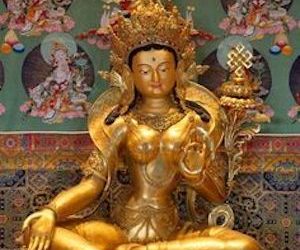
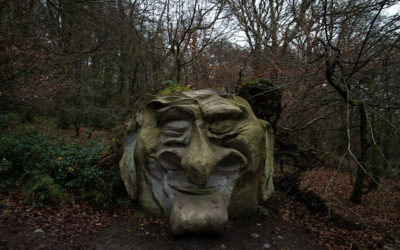

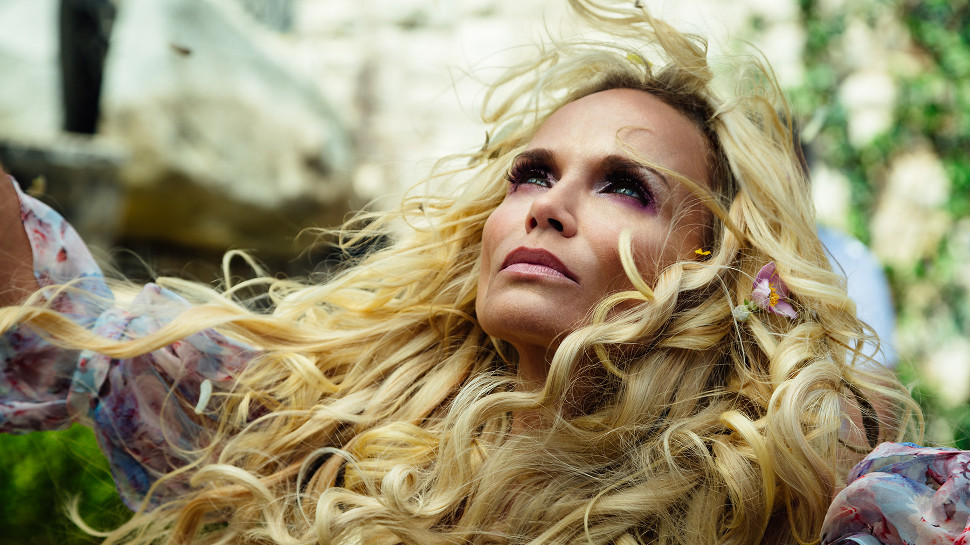
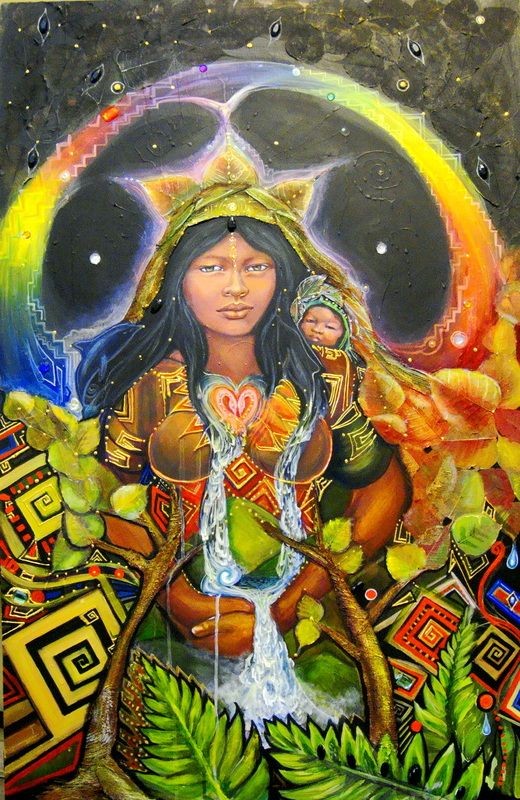

































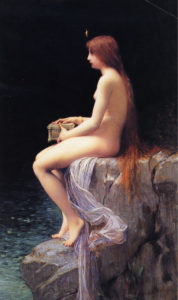


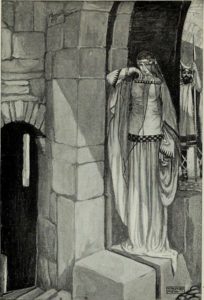











And then there is India, where female goddesses reign!